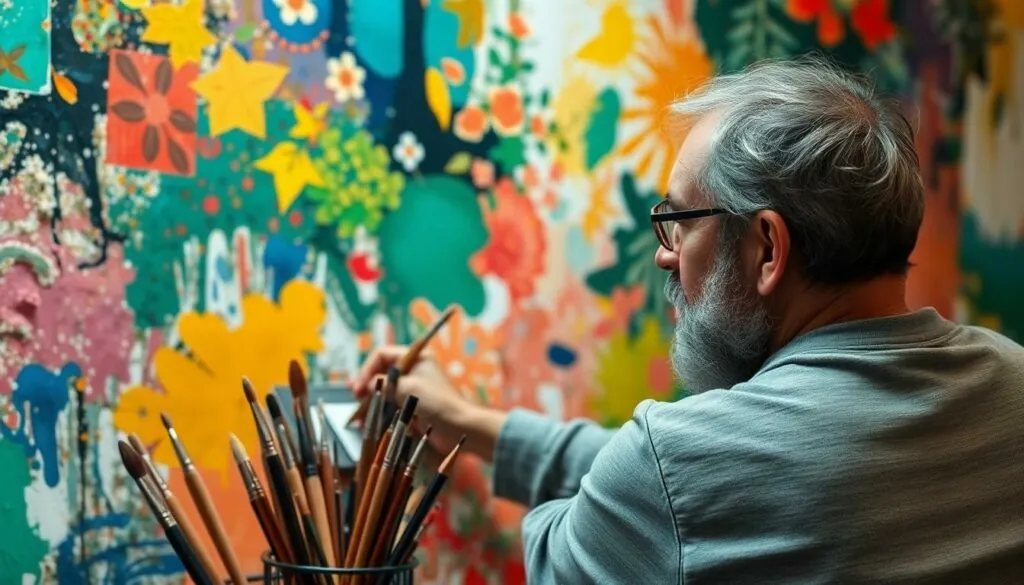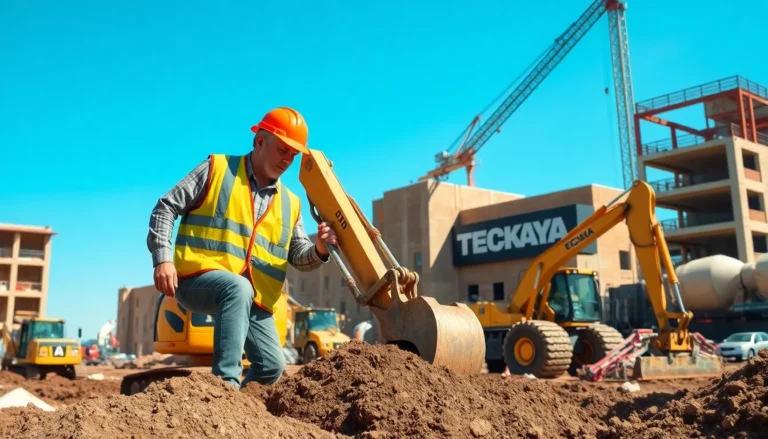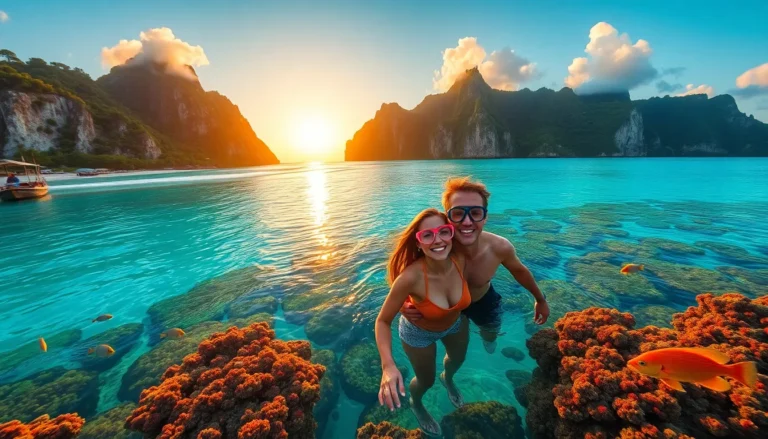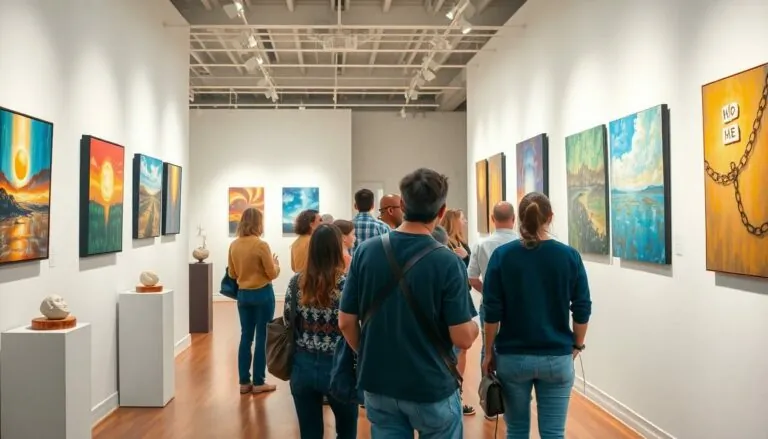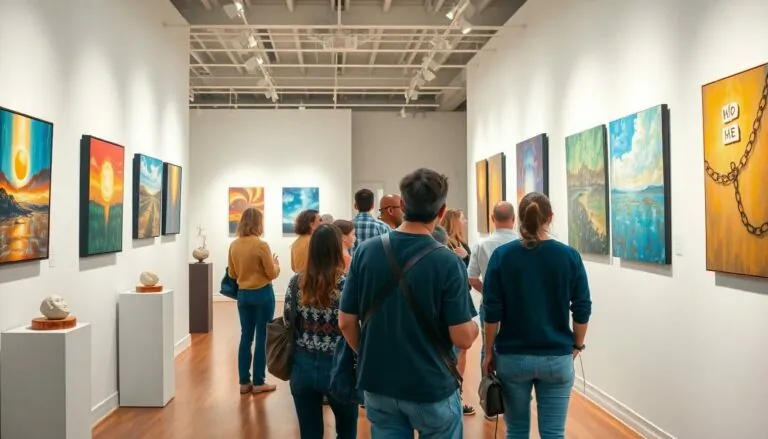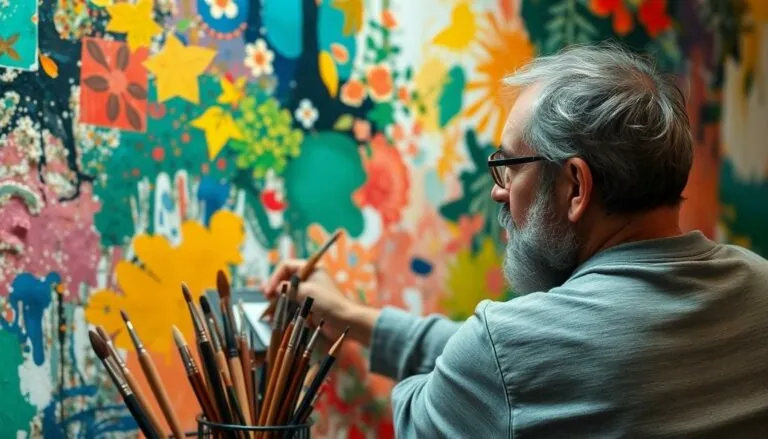Table of Contents
ToggleEvery artist knows that a stunning foreground needs a captivating background to truly shine. Yet, finding the perfect backdrop can feel like searching for a needle in a haystack—or worse, like trying to paint with a brush made of spaghetti. Fear not! There’s a world of creative painting background ideas just waiting to transform your canvas from drab to fab.
Types Of Painting Background Ideas
Exploring various painting background ideas can significantly enhance an artwork’s visual impact. Artists often choose from diverse styles to find the perfect fit for their pieces.
Abstract Backgrounds
Abstract backgrounds offer versatility and creativity in how they complement the subject. They commonly feature bold colors, dynamic shapes, and fluid designs. By using unpredictable patterns, artists create a sense of movement and energy. This type of background can convey emotions, allowing viewers to interpret meaning uniquely. Incorporating drips, splatters, or geometric forms adds depth and intrigue to the overall composition. It’s essential to choose colors that resonate with the main subject for cohesive artwork.
Nature-Inspired Backgrounds
Nature-inspired backgrounds draw from the beauty of the natural world, providing a serene and organic feel. Landscapes featuring forests, mountains, or oceans create calming atmospheres that enhance focal points. Artists often use soft pastels for a gentle look or vibrant hues for more dramatic effects. Incorporating elements like clouds, trees, or flowers adds charm and context to the piece. These backgrounds can reflect different moods based on seasonality or time of day. Selecting elements that resonate with the subject enhances narrative depth.
Textured Backgrounds
Textured backgrounds introduce tactile elements that engage viewers beyond mere color. Techniques like sponging, stippling, or using palette knives create unique surface qualities. Textures can evoke emotions or mimic natural materials—like wood, stone, or fabric. Mixing mediums often enhances depth and complexity, fostering visual interest. Choosing texture that complements the subject helps unify the artwork. This background style encourages experimentation, as artists can explore endless creative possibilities, enriching their artworks.
Techniques For Creating Backgrounds
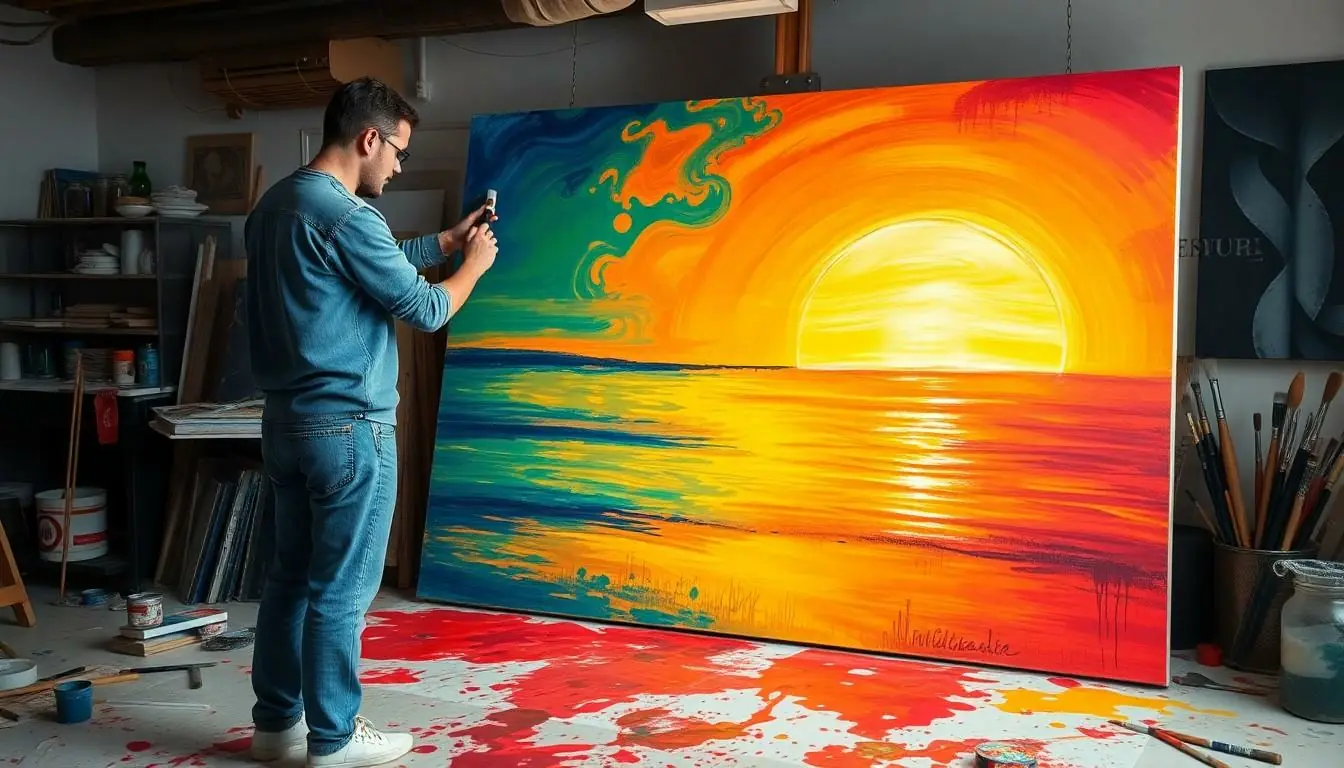
Creating engaging backgrounds requires a blend of various techniques that can transform a simple canvas into an extraordinary piece of art. The following methods enhance artistic depth and elevate overall appeal.
Layering Techniques
Layering creates depth and complexity in backgrounds. Artists often start with an underpainting to establish color and tone, which serves as a foundation. Subsequent layers build on this, introducing different colors, patterns, or textures. A soft brush can blend layers smoothly, while a palette knife may add sharp contrasts. This technique allows for experimentation with transparency, creating a sense of dimension. Many artists utilize oil or acrylic paints, which dry at varying rates, permitting adjustments during the layering process.
Use Of Color Gradients
Color gradients provide a seamless blend between hues, enriching backgrounds with visual interest. Artists commonly employ gradual transitions from one color to another, creating harmony. By mixing colors on the palette beforehand, they achieve smooth transitions on the canvas. Brushes can help apply the gradient, while sponges may add unique textures. Using a wet-on-wet technique encourages colors to merge naturally, enhancing the luminous effect. This approach is ideal for capturing atmospheric conditions, like sunsets or skies, giving depth to any artwork.
Tools And Materials Needed
Having the right tools and materials enhances the painting experience. Essential items contribute to creating stunning backgrounds.
Brushes And Palette Knives
Artists rely on a variety of brushes to achieve different effects. Flat brushes work well for bold strokes and broad areas, while round brushes excel in detail and precision. Filbert brushes blend the characteristics of both, making them versatile for various techniques. Palette knives serve multiple purposes, from mixing colors to applying thick layers of paint. They create texture and add dimension, especially in abstract backgrounds. Selecting brushes with different bristle types allows for experimentation with techniques and textures.
Paint Types And Surfaces
Different paint types influence the final appearance of backgrounds. Acrylic paints dry quickly and provide vibrant colors, making them ideal for bold, abstract designs. Oil paints offer a slower drying time, allowing for blending and layering, which suits intricate backgrounds. Watercolor paints create soft, translucent effects, perfect for nature-inspired themes. Choosing the right surfaces is crucial, too. Canvas, watercolor paper, and wood panels each lend distinct textures, impacting the overall look of the artwork. Using primed surfaces enhances paint adherence and vibrancy.
Tips For Enhancing Your Backgrounds
Enhancing backgrounds requires thoughtful strategies to create depth and balance within the artwork. Artists can achieve captivating results by applying specific techniques.
Balancing Foreground And Background
Achieving harmony between foreground and background is essential for creating compelling artwork. The foreground should draw attention while the background supports the main subject. Use color contrast to separate the two elements effectively. Lighter backgrounds often push the focus forward, while darker shades can create a sense of depth. Varying the level of detail in each layer also improves visual appeal. For instance, intricate details work well in the foreground, whereas softer, blurred elements in the background offer balance. Consider perspective techniques to maintain proportion and depth perception.
Incorporating Patterns And Depth
Incorporating patterns adds interest and dimension to backgrounds. Artists can use repetitive designs or organic forms to guide the viewer’s eye. Textured paint application creates visual intrigue, drawing attention to both subtle and bold patterns. Layering different patterns can enhance the overall composition, helping to weave the foreground and background together. Gradients can also unify patterns, offering seamless transitions that create depth. Utilizing stencils or stamps provides additional avenues for pattern creation, making it easier to add variation and complexity.
Exploring diverse painting background ideas opens up a world of creative possibilities for artists. By experimenting with various techniques and materials, they can transform their canvases into captivating works of art. Whether opting for abstract designs, nature-inspired themes, or textured surfaces, each choice plays a crucial role in enhancing the overall composition.
Focusing on harmony and balance between the foreground and background ensures that the artwork resonates with viewers. With the right tools and an adventurous spirit, artists can elevate their creations, making their backgrounds an integral part of their artistic expression. Embracing these ideas can lead to stunning results that truly stand out.

